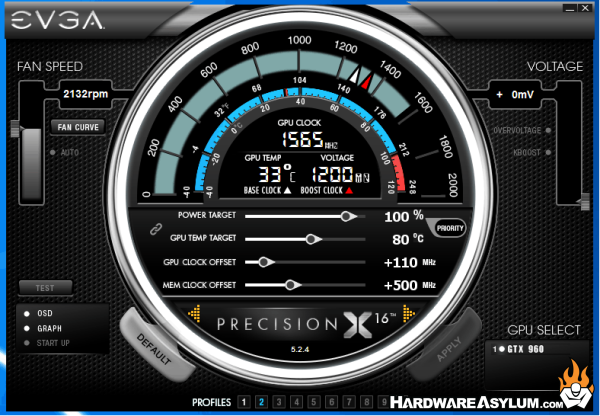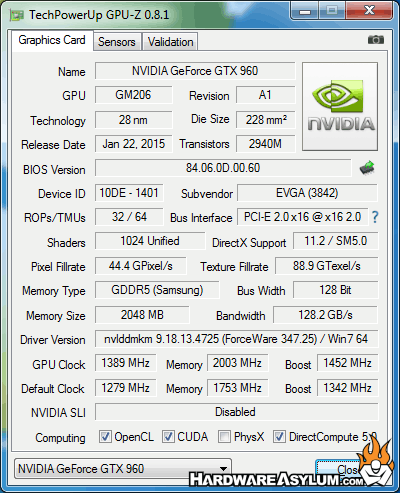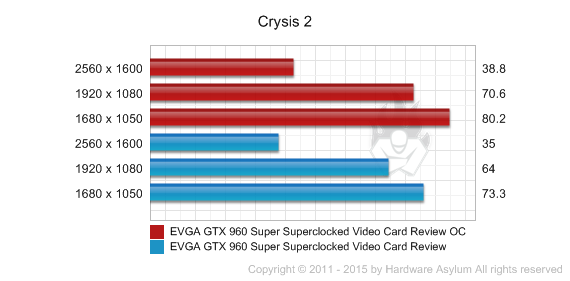EVGA GTX 960 Super Superclocked Video Card Review
Author: Dennis GarciaOverclocking
Video cards with a factory overclock are a good investment for any gamer since they can offer you better performance with a marginal price premium and a warranty. Overclocking them beyond this is just fun and a way to get a little more performance from your purchase.
Overclocking the GTX 960 SuperSC is rather straight forward. You simply increase the core clock and closely monitor the clock frequency using a program like EVGA PrecisionX then run a few performance tests. It is important that you monitor the clocks since the variable boost clock can push frequencies higher than you may expect based on system load and temperature.
On the EVGA GTX 960 SuperSC you will get two power options. The first is using the dBi BIOS with a 110% power target. Switching to the SSC BIOS will give you a 115% power target and disables the silent fan option.
For these tests we were fortunate enough to get a rather decent overclock of 1389Mhz Core and 2003Mhz Memory. Under load the boost clock would ramp the core up to 1565Mhz which also appeared to be the maximum we could get on air.






As we have mentioned many times overclocking isn’t a guaranteed thing and while we were able to run at 1500Mhz+ that isn’t to say your card will do the same. Likewise if you are in the market for a SuperSC card you are already getting a healthy factory overclock so anything above that is gravy.
The real surprise with this card was how far the memory scaled. Normally the memory multiplier only allows you to add maybe +200 to the memory clock before things stop working. With the EVGA GTX 960 SSC we were able to run +500 stable which translated into an extra 250Mhz and a noticeable gain in benchmark performance.
Changing the memory clock alone is a huge boost with this card, especially given the rather narrow 128bit memory bus.

